
Mario Kart 64 is a kart racing game developed and published by Nintendo for the Nintendo 64 (N64). It is the second main entry in the Mario Kart series and is the successor to Super Mario Kart (1992) for the Super Nintendo Entertainment System. It was released in Japan on December 14, 1996; in North America on February 10, 1997; in the United Kingdom on June 13, 1997; and in Europe on June 24, 1997. It was released for the iQue Player in China on December 25, 2003. It was released on the Wii and Wii U Virtual Console in 2007 and 2016, and on the Nintendo Switch Online + Expansion Pack on October 25, 2021.
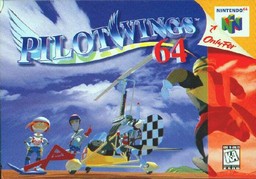
Pilotwings 64 is a flight simulation video game developed by Nintendo and Paradigm Simulation and published by Nintendo for the Nintendo 64. It was one of three launch titles for the Nintendo 64 in Japan as well as Europe and one of two launch titles in North America, along with Super Mario 64. Pilotwings 64 is a sequel to Pilotwings for the Super Nintendo Entertainment System, which was a North American launch game for its respective console in 1991. Also like that game, Pilotwings 64 received production input from Nintendo producer and EAD General Manager Shigeru Miyamoto.

Cruis'n USA is an arcade racing game originally released in 1994. It was developed by Eugene Jarvis' company TV Games Inc., and manufactured by Midway Games. It is the first game in the Cruis'n series and features races set in locations across the continental United States.

Cruis'n World is the 1996 sequel to the 1994 arcade racer Cruis'n USA. Cruis'n World allows players to race on various tracks around the world. The game also features more cars than Cruis'n USA. This game introduced stunts to the Cruis'n series. They served to dodge obstacles, take close curves, and gain extra seconds of time.

War Gods is a fighting video game originally released to arcades by Midway Games in 1996. Ports for the Nintendo 64, PlayStation and Windows were released in 1997. In the game, players control one of ten fighters who have been given great power by a mysterious ore that crashed-landed on Earth from outer space. The object of the game is to defeat all the other fighters to become the most powerful warrior on the planet.

Automobili Lamborghini is a 1997 racing video game developed and published by Titus France for the Nintendo 64. It is a successor to Lamborghini American Challenge.
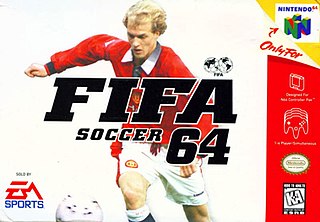
FIFA Soccer 64, known in Europe as FIFA 64 and in Japan as J. League Live 64, is an association football video game developed by EA Canada and published by Electronic Arts for the Nintendo 64. The cover features Manchester United midfielder Jordi Cruyff. The game garnered mixed reviews from critics upon release. Although its simulation was generally praised as realistic, reviewers critiqued the jerky animation, choppy frame-rates, unresponsive controls, and underwhelming usage of the Nintendo 64's capabilities. The Japanese version has officially licensed players and teams from Japan's J. League.

International Superstar Soccer 64 is a video game developed by Konami Computer Entertainment Osaka in the International Superstar Soccer series by Konami. Its team lineup follows the Super NES version of International Superstar Soccer Deluxe, only with South Africa replacing Morocco.
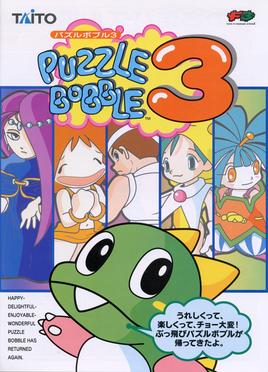
Puzzle Bobble 3 is an action puzzle video game developed by Taito. The second sequel to Puzzle Bobble, it was released for arcades in September 1996 and later ported to the Sega Saturn, PlayStation, Game Boy, Nintendo 64 and Microsoft Windows. Like its predecessors, the player is tasked with shooting balls at groups of balls, creating groups of three or more, which are then removed from play. Further ports for the Nintendo Switch, PlayStation 4 and Xbox One were released in February 2023 by City Connection alongside Puzzle Bobble 2.

Wayne Gretzky Hockey NHLPA All-Stars is a Super NES and Genesis/Mega Drive hockey video game that features Wayne Gretzky and other NHLPA players.

NHL Open Ice: 2 on 2 Challenge, or just NHL Open Ice, is an ice hockey arcade game released by Midway Games in 1995. It features comically exaggerated hockey play, causing it to often be described as an ice hockey equivalent to Midway's NBA Jam.

NHL 99 is an ice hockey video game developed by Electronic Arts Canada. It was released in September 1998 and was the successor to NHL 98.

Bottom of the 9th is a baseball game by Konami for the PlayStation, which was later ported to the Sega Saturn and the Nintendo 64. It is a heavily updated version of Konami's 1989 arcade game Bottom of the Ninth. The game is part of Konami's XXL Sports brand.

NBA Hangtime is a 1996 basketball arcade game developed and released by Midway. Home versions were released for the Nintendo 64, PlayStation, Super NES, Sega Genesis, and Microsoft Windows.
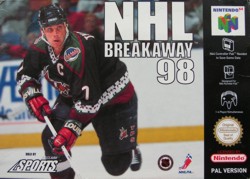
NHL Breakaway 98 is a 1997 ice hockey video game for the PlayStation and Nintendo 64. It was the first hockey game to come from Acclaim Entertainment and the first game released under the publisher's new Acclaim Sports label. The game met with divisive reviews upon its release for the PlayStation, though the game's management mode and its system of using points to improve aspects of a team received widespread praise, but reviews for the later Nintendo 64 version were more consistently favorable. It was followed by a sequel, NHL Breakaway 99, released the following year.

Olympic Hockey '98 is an ice hockey game for the Nintendo 64 that was released in 1998. It is a re-release of Wayne Gretzky's 3D Hockey '98, but this time not endorsed by Wayne Gretzky and featuring the license for the 1998 Winter Olympics that were celebrated in Nagano, Japan. It was the video game developer debut of Treyarch. Besides the box art, in-game titles, and some minor graphic changes, every single aspect of the game is practically identical to Wayne Gretzky's 3D Hockey '98. Due to this fact, it received highly negative reviews, with IGN rating Olympic Hockey Nagano '98 a zero.

Wayne Gretzky's 3D Hockey '98 is an ice hockey game for the Nintendo 64 and PlayStation, released in 1997. The game is endorsed by hockey star Wayne Gretzky, and is the sequel to Wayne Gretzky's 3D Hockey. A successor game, Olympic Hockey '98, was released in 1998.
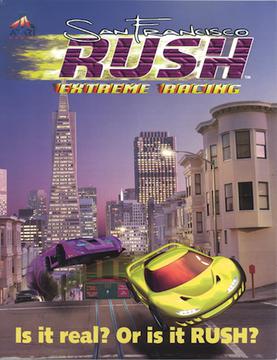
San Francisco Rush: Extreme Racing is a video game developed and published by Atari Games. This game was first released in arcades in 1996 and was ported to Nintendo 64 in 1997 and the PlayStation in 1998. San Francisco Rush: Extreme Racing is the first game in the Rush series.
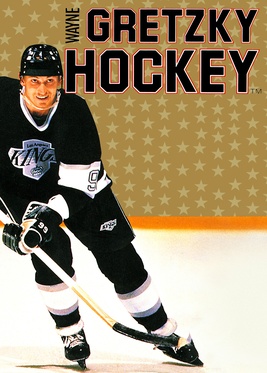
Wayne Gretzky Hockey is an ice hockey-themed sports game developed by Bethesda Softworks, and first published in 1988.

Killer Instinct Gold is a fighting game based on the arcade game Killer Instinct 2. The game was developed by Rare and released by Nintendo for the Nintendo 64. Players control characters who fight on a 2D plane set against a 3D background. Players press buttons to punch and kick their opponent in chains of successive hits, known as combos. Large combo successions lead to stronger attacks and brutal, stylistic finisher moves underscored by an announcer. Characters—including a gargoyle, a ninja, and a femme fatale—fight in settings such as a jungle and a spaceship. Killer Instinct Gold includes the arcade release's characters, combos, and 3D, pre-rendered environments, but excludes its full-motion video sequences and some voice-overs due to restrictions of the cartridge media format. The Gold release adds a training mode, camera views, and improved audiovisuals.






















